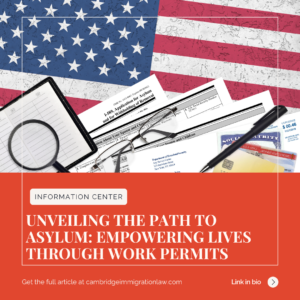NAVIGATING ELIGIBLE EMPLOYMENT FOR H-2B VISAS: INDUSTRIES, REQUIREMENTS, AND APPLICATION PROCESS
NAVIGATING ELIGIBLE EMPLOYMENT FOR H-2B VISAS: INDUSTRIES, REQUIREMENTS, AND APPLICATION PROCESS
The H-2B visa program stands as a pivotal avenue for non-agricultural workers to temporarily fulfill employment needs in the United States, spanning a diverse array of industries. From the bustling hospitality sector to the dynamic construction industry, the H-2B visa caters to employers facing seasonal, one-time, intermittent, or peak load demands.
Employers seeking to utilize the H-2B visa program must adhere to stringent eligibility criteria. They must substantiate a dearth of qualified U.S. workers for the job, ensure that hiring foreign nationals won’t adversely affect domestic employees, possess a U.S.-based business with a valid Federal Employer Identification Number (FEIN), and demonstrate the temporary nature of the employment need. Conversely, prospective H-2B visa holders must secure employment offers from U.S. employers, exhibit an intent to return home post-visa expiration, possess the requisite skills for the job, and hail from eligible countries. Fulfilling these prerequisites aligns both employer and employee with the overarching objectives of the visa program.
The application journey for H-2B visas entails a multifaceted process, with primary responsibility resting on the employer. This encompasses filing ETA Form 9142B for temporary labor certification with the Department of Labor, submitting Form I-129 to the USCIS following certification, and adhering to prevailing wage determination guidelines.
Your employer will have to file Form I-129 for you after ETA 9142B has been approved. Where your employer will file Form I-129 depends on the service center nearest to your employer’s primary address, which could be the Vermont, Nebraska, Texas, or California Service Center. If your employer needs you urgently, they must also file Form I-907, Application for Premium Processing, when filing Form I-129.
The application must be submitted within 45 to 180 days before your employer needs you. Each employee requires a separate application, and they are not transferable. For example, if your employer intends to hire five foreign workers, they must petition USCIS individually for each employee.
To file Form I-129, your employer must include evidence of having paid the filing fee along with specific documents, including the H Classification Supplement to Form I-129, proof that you meet the minimum job requirements, and proof of your need in the U.S if you are not from an eligible country.
Once Form I-129 is approved, USCIS will issue your employer Form I-797, which outlines the timeframe for your employment. Your employer must adhere strictly to these dates; failure to do so may result in future applications being denied.
As industries require temporary workers at different times, the H-2B visa program is crucial for filling these gaps. It helps industries like hospitality and construction find workers for seasonal or intermittent jobs. By using the advice given here, both employers and people applying for the visa can better understand how to take part in this important part of the U.S. job market.


 NAVIGATING THE H1B LOTTERY
NAVIGATING THE H1B LOTTERY UNVEILING THE PATH TO ASYLUM: EMPOWERING LIVES THROUGH WORK PERMITS
UNVEILING THE PATH TO ASYLUM: EMPOWERING LIVES THROUGH WORK PERMITS

 HOW LONG DOES THE FAMILY-SPONSORED IMMIGRATION PROCESS TYPICALLY TAKE, AND ARE THERE ANY WAYS TO EXPEDITE IT FOR URGENT CASES?
HOW LONG DOES THE FAMILY-SPONSORED IMMIGRATION PROCESS TYPICALLY TAKE, AND ARE THERE ANY WAYS TO EXPEDITE IT FOR URGENT CASES? ARE THERE ANY FINANCIAL OR AFFIDAVIT OF SUPPORT REQUIREMENTS FOR FAMILY-SPONSORED IMMIGRATION APPLICANTS?
ARE THERE ANY FINANCIAL OR AFFIDAVIT OF SUPPORT REQUIREMENTS FOR FAMILY-SPONSORED IMMIGRATION APPLICANTS?
 WHAT IS THE ADJUSTMENT OF STATUS PROCESS (FORM I-485) FOR FAMILY-SPONSORED VISA HOLDERS AND WHEN IS IT NEEDED FOR U.S. PERMANENT RESIDENCY?
WHAT IS THE ADJUSTMENT OF STATUS PROCESS (FORM I-485) FOR FAMILY-SPONSORED VISA HOLDERS AND WHEN IS IT NEEDED FOR U.S. PERMANENT RESIDENCY? STEPS TO SECURE A K-1 VISA FOR FIANCÉ(E)S OF U.S. CITIZENS
STEPS TO SECURE A K-1 VISA FOR FIANCÉ(E)S OF U.S. CITIZENS